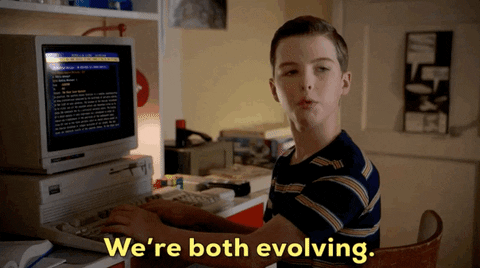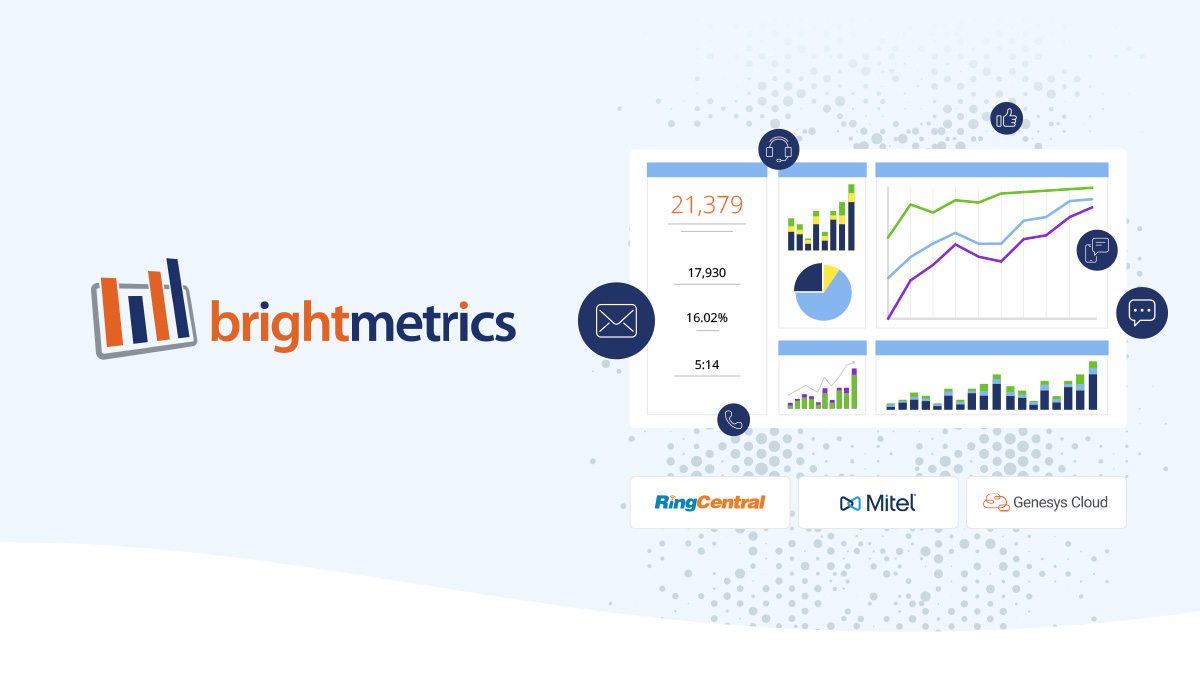If you have ever read any of our other blogs (which we highly recommend) you might notice that we use the terms call center and contact center interchangeably. We do this because we provide software that can benefit both call centers and contact centers but there is actually a difference in business application. Understanding the differences can help you apply the right solutions for your business needs, and it is a critical first step in building an efficient customer experience. In this article, we will analyze the key differences between contact centers vs call centers.
What Is a Call Center vs a Contact Center?
Call centers are departments that focus on providing inbound and/or outbound services to customers of a business. Traditional call center agents will handle customer inquiries in the form of voice calls and do things like telemarketing, product servicing, debt collection, subscription servicing, or billing. Anything customer-related is handled in a call center and call centers can either be “housed” within an organization or outsourced.
The natural follow-up question is then “What is a contact center?” A contact center also handles inbound and outbound customer interactions. They also generally handle facets of the customer experience. They too can operate within an organization or be outsourced. However, unlike call centers, contact centers go beyond telephone interactions and are designed to handle customer inquiries across multiple channels. This omnichannel support can take the form of email, social messaging, text messaging (SMS), chatbots, in-app communications, web forms, and phone calls.

What Is the Difference Between a Contact Center and a Call Center? 3 Key Differentiations
1. Agent Skills
Every customer service professional understands the importance of soft skills. Skills like active listening, empathy, teamwork, time management, and problem-solving are immeasurably important building blocks to providing top-notch customer experiences. However, agents operating within a call center environment that are really dialed into the art of phone calls and the mechanics of a successful interaction will have a different skill set than an agent who provides omnichannel support in a variety of methods. The skills are of course teachable and transferable but there are differences.
For example, multi-tasking will look different for a contact center agent vs a call center agent. Call center agents typically handle one customer interaction at a time. Whereas contact center agents may be handling 3 chats, 5 emails, and a phone call at once. Again, a contact center agent will need the skill set to balance and navigate conversations across a variety of platforms, all requesting immediate responses. This is compared to a call center agent who will also need to handle a multitude of customer inquiries, however, these will be for the majority via voice calls.
Communication Nuances
Delving further into understanding the importance of the medium when communicating within a contact center, the timing and the place you are communicating from need to be taken into consideration. Your contact center agents will often be handling email, chat, phone, or social inquiries so understanding the best way to communicate and resolve issues effectively is going to be different for them vs if they only needed to provide communication over the phone. Concise, professional, and grammatically sound exchanges are important. Reducing costly back-and-forth communication because agents are providing vague or incomplete answers is also something contact center managers should be monitoring and evaluating in their training efforts.
2. Operational Management
Because successful contact center agents may require a different skill set such as the aforementioned multitasking, writing proficiency, or technology skills it can also mean that hiring looks different compared to call centers. Screening tools, recruiting methods, hiring, and training practices may be applied in a different manner because of the target audiences and the profile of the ideal agent.
Depending on the bandwidth of your team, you may have a training department that can help ensure brand standards get met in regards to grammar, spelling, voice, and punctuation but sometimes that may not be possible. In the case of a call center being able to fully train agents on phone work exclusively may be an easier lift for implementation than a full-service contact center.

Scheduling
Forecasting volume is a complex task that has significant implications for customer experience and labor costs. Adding channels adds even more complexity to that equation so contact centers have to adjust for that additional workload on top of call volume. Most digital channels require asynchronous (responses are often not expected immediately and interactions don’t happen in real-time) communication; it will often delay how forecasting works which can impact scheduling. Agent scheduling balancing forecasts, skill sets, and multichannel servicing can be more complex for contact centers to ensure optimal staffing levels to take care of your customer’s needs.
3. Technology
Omnichannel Routing
This may seem basic but if you are offering omnichannel support then you will need omnichannel routing solutions. Proper routing will be able to look at all incoming contacts from all channels to organize them in a universal queue to then route them according to user-defined rules. This ensures that real-time chats and phone calls are prioritized and routed ahead of asynchronous contacts like social media. This task is often handled by an automatic contact distributor (ACD) vs relying exclusively on an Interactive Voice Response (IVR) system.
Workforce Management
We’ve talked about forecasting and scheduling being a key difference between contact centers and call centers which then equates to needing different workplace management software that supports the functions of your contact center. For all of your tools, you will want to ensure that they can accommodate factors like multiple channels, multi-skilled agents, ultimately ensuring that all contacts from all channels will have the right agents hired and scheduled to handle them.
Analytics and Reporting
If you have agents answering all types of inquiries they are going to need different resources than an agent handling exclusively calls. This is an opportunity to really hone your partnerships to best support your agents and look at things like analytical and reporting software such as Brightmetrics. Having powerful and reliable dashboards highlighting metrics, and simple reporting tools showing trends and performance progress assists in making better team and business decisions for your organization. Contact centers rely heavily on tools that can unify operations, incorporate multiple channels, and provide high-level optics of the operations.
Why Does the Difference Between a Contact Center and a Call Center Matter?
The differences between call centers and contact centers come down to how you feel your customers will best be served by the resources you have to offer them. Not every company has the desire, need, or resources to develop a contact center. Contact centers use more robust systems and have a greater output of data. With more conversations being had by more methods of communication- you will likely measure the performance of your contact center using different KPIs.
Can a Call Center Be Transformed Into a Contact Center?
Now that we’ve delved into the nuances of the differences between call centers and contact centers you may be wondering if there is a time where transformation can happen to make a contact center from contact center origins. As we mentioned above, sometimes contact centers do not make strategic business sense. As time progresses you will likely be continuously evaluating if your customer service strategy is matching the growth of your organization.

Today most consumers want the path of least resistance when it comes to getting technical support or customer assistance. A lot of consumers are getting increasingly accustomed to digital interactions like chat, text, or email. In the same breath, we also are developing a deepened understanding of the role of traditional phone-based customer service in delivering exceptional user and customer experiences.
Understanding these dynamics of customer experience and behavior is important when organizations are looking at metrics like net promoter scores (NPS), referrals, customer loyalty, and customer churn. Customer support and how a company approaches its philosophy can make or break a company and can help a company stand out amongst competitors. Developing the infrastructure and making the investments in the technology and humans that make these operations work is a significant undertaking but it is absolutely possible for an organization to make the switch from call center to contact center when they are ready for that stage.
The Future of the ‘Call Center vs Contact Center’ Debate
When we try to forecast what we see on the horizon of the call center vs contact center “debate” we keep in mind the larger context of general operational trends. No matter which route a company takes prioritizing technology, your customer’s experience, and centering your operations around human beings will be your best bet. The future demands that organizations adopt forward-thinking strategies and for a lot of organizations that translates into providing comprehensive, digital-first customer experience hubs via contact centers.
Omnichannel customer support will help managers and employees optimize their products and services by being where their customers are and meeting their needs in real-time. Ultimately to figure out what is going to be the best solution for your organization you need to be able to balance customer service and retention, employee productivity with overall long-term profitability.

Differences Between Contact Centers and Call Centers: Key Takeaways
If you reflect on any spectacular customer service experience you have ever had there is a strong likelihood that the experience began with someone understanding your exact needs and expectations as a customer. Companies who understand that taking care of their customers and the people who take care of the customers (the agents) are also the companies that are systematically and continuously seeking ways to better use technology, data, and optimize their operations. So if your customers are purchasing your product, giving rave reviews, taking the journey you have designed for them without any large issues and you are able to meet their needs with an inbound and outbound call center only then you might be just where you need to be.
If you have identified that your customers have needs that are not getting met and getting lost along the customer journey in a way that is inhibiting growth or negatively impacting your bottom line it may be the time to look for more robust customer service solutions.




